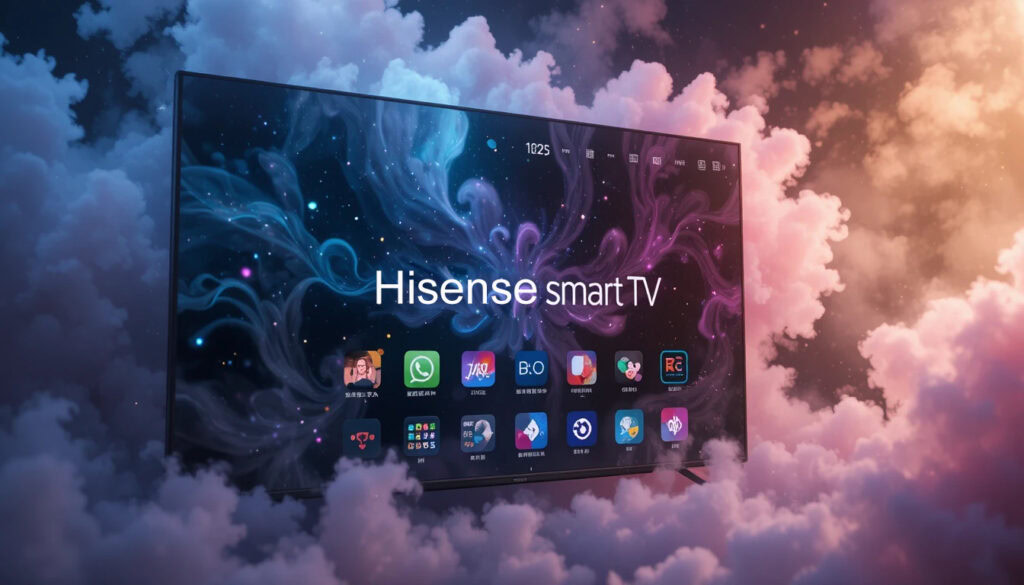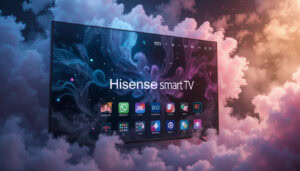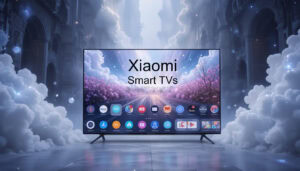Table of Contents
Discover the Best Hisense Smart TVs for Your Home

Credit: iken3
The landscape of modern television has shifted in ways that would have seemed impossible a decade ago. Hisense has emerged as a formidable player in this transformation, delivering quality and innovation at price points that challenge the old guard. Hisense smart TVs carry a reputation built on mini LED technology, quantum dot color accuracy, and an understanding of what viewers actually want from their screens. These are not smart TVs that shout for attention through gimmicks.
Hisense smart TVs occupy a unique space in the market. Hisense positions itself between budget brands that cut too many corners and premium manufacturers whose prices often reflect branding more than true capability. This middle ground has proven fertile. The result is a lineup that delivers features once reserved for flagship models at prices that feel reasonable rather than aspirational.
Comparison of Hisense Smart TVs and Competitors
| Smart TV Brands | Market Position & Key Strengths |
|---|---|
| Hisense Smart TVs | Strong value proposition, advanced mini LED technology, and gaming features at competitive prices. |
| LG | Premium OLED specialist with webOS platform. Leader in OLED panel technology |
| Samsung | Market leader with extensive range. Neo QLED technology and Tizen OS. Strong brand presence |
| TCL | Direct mini LED competitor. Similar value positioning. Strong in brightness and zone count. |
| Sony | Premium brand focusing on processing and motion. Excellent upscaling and color accuracy. |
| Xiaomi | Provide excellent value for money, innovative features, and a wide range of screen technologies |
| Philips | European market strength. Ambilight technology differentiator. Android TV platform. |
| Panasonic | Focus on professional calibration and filmmaker mode. Strong in Europe. Premium pricing with emphasis on picture accuracy over gaming features. |
Hisense smart TVs serve several user types particularly well. Gamers find value in high refresh rates and low input lag at prices that do not require sacrificing groceries. Movie enthusiasts appreciate the mini LED brightness that makes HDR content shine without the burn-in concerns that shadow OLED ownership. Families benefit from the Google TV interface and VIDAA platforms that simplify content discovery across streaming services. Sports fans get the motion handling and brightness needed to see every play clearly, even with afternoon games flooding the room with natural light.
These 6 Hisense smart TVs stand out in the current lineup. The UX series represents the pinnacle of RGB mini LED technology in sizes that approach projector territory. The U8QG brings flagship brightness to mainstream pricing. The U7QG offers gaming-focused features without the premium cost. The U7Q Pro balances performance and value with respectable specifications. The A85Q OLED provides an alternative for those who prefer organic panels. The E7Q Pro delivers quantum dot color in a direct LED package aimed at budget-conscious buyers seeking quality.
Each of these Hisense smart TVs carves out its own territory in the market. The differences matter. Understanding which smart TV aligns with your priorities requires looking beyond marketing claims to see what these screens actually deliver.
1. Hisense Smart TVs: Hisense UX/UXQ – The RGB Mini LED Revolutionary
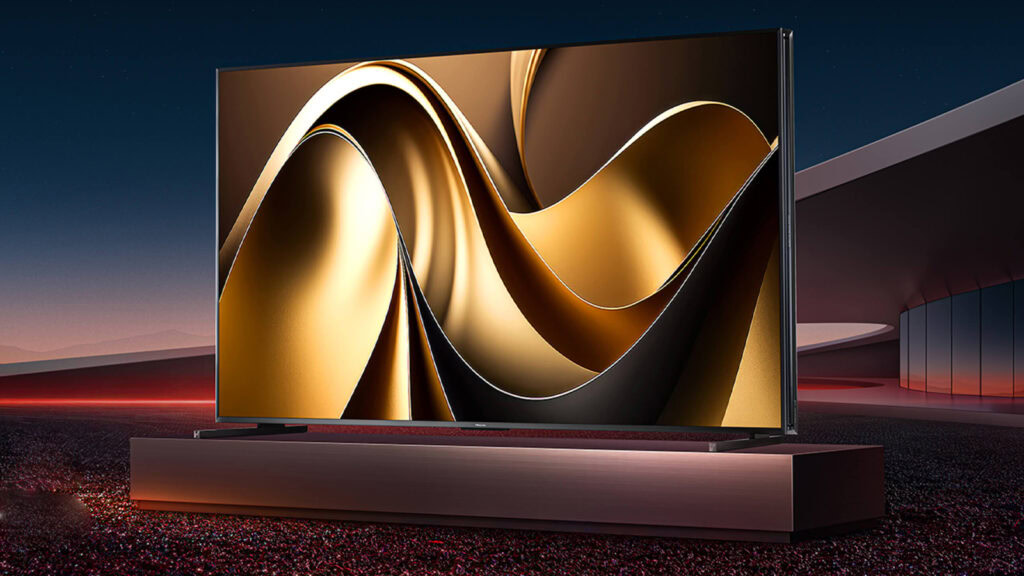
Credit: Hisense
The Hisense UX series represents something genuinely new in television technology. Where traditional mini LED uses blue diodes filtered through quantum dots or phosphors, the UX employs red, green, and blue LEDs directly. This fundamental shift enables color accuracy that approaches professional reference monitors and brightness that reaches levels previously unattainable in consumer displays. The 116-inch model delivers 8000 nits peak brightness in the largest consumer television currently available. The 100-inch variant reaches 4000 nits while maintaining the same RGB technology advantage.
Major Specifications
| Specification | Details |
|---|---|
| Processor / Chipset | Hi View AI Engine X based on MediaTek Pentonic chipset with Deep Neural Networks |
| Operating System | Google TV (US) / VIDAA U9 (Europe) |
| Display | 100 inch or 116 inch, 4K Ultra HD, RGB Mini LED panel with VA technology |
| Refresh Rate | 165Hz native (100 inch), 170Hz (116 inch) |
| HDR Support | Dolby Vision, Dolby Vision IQ, Dolby Vision 2, HDR10, HDR10+, HDR10+ Adaptive, HLG, IMAX Enhanced |
| Audio | 6.2.2 Channel CineStage X Surround system with Devialet partnership, Dolby Atmos, DTS Virtual:X |
| Ports | 3x HDMI 2.1, 1x USB C with DisplayPort, 2x USB A, Ethernet, Optical audio, AV composite |
| Connectivity | Wi Fi 6E, Bluetooth 5.3, Chromecast built in, Google Assistant, WiSA SoundSend |
| Smart Features | Hi View AI Engine X with real time frame and audio analysis, AI upscaling, Anti Reflection Pro coating |
| Gaming Features | VRR up to 165Hz, AMD FreeSync Premium Pro, Auto Low Latency Mode, Game Mode Ultra, low input lag |
User Type Recommendation: Who Should Buy It?
| User Type | Is This Smart TV a Good Fit? | Why? |
|---|---|---|
| Movie & Series Lovers | ✅ | Exceptional HDR performance with Dolby Vision 2 support, massive screen size creates true cinematic immersion, 95% BT.2020 color space coverage |
| Gamers | ✅ | High refresh rate with VRR, FreeSync Premium Pro, multiple HDMI 2.1 ports, DisplayPort via USB C for PC gaming |
| Families & Home Users | ⚠️ | Outstanding features but very large size requires significant space, premium pricing limits accessibility for most families |
| Sports Fans | ✅ | High brightness maintains visibility in any lighting, fast refresh rate captures motion without blur, massive size brings stadium feel home |
| Tech Enthusiasts | ✅ | First consumer RGB Mini LED technology, cutting edge processing, represents genuine innovation rather than incremental improvement |
Quick Pros & Cons Table
| Pros | Cons |
|---|---|
| ✅ Revolutionary RGB Mini LED technology with unmatched color accuracy | ❌ Only three HDMI inputs despite premium positioning |
| ✅ Exceptional peak brightness up to 8000 nits on 116 inch model | ❌ Very high price point starting around $15000 |
| ✅ Massive screen sizes create unparalleled immersion | ❌ Requires substantial space and wall support |
| ✅ Advanced gaming features with DisplayPort support | ❌ Glossy screen reflects light sources in darker content |
2. Hisense Smart TVs: Hisense U8QG – Premium Performance
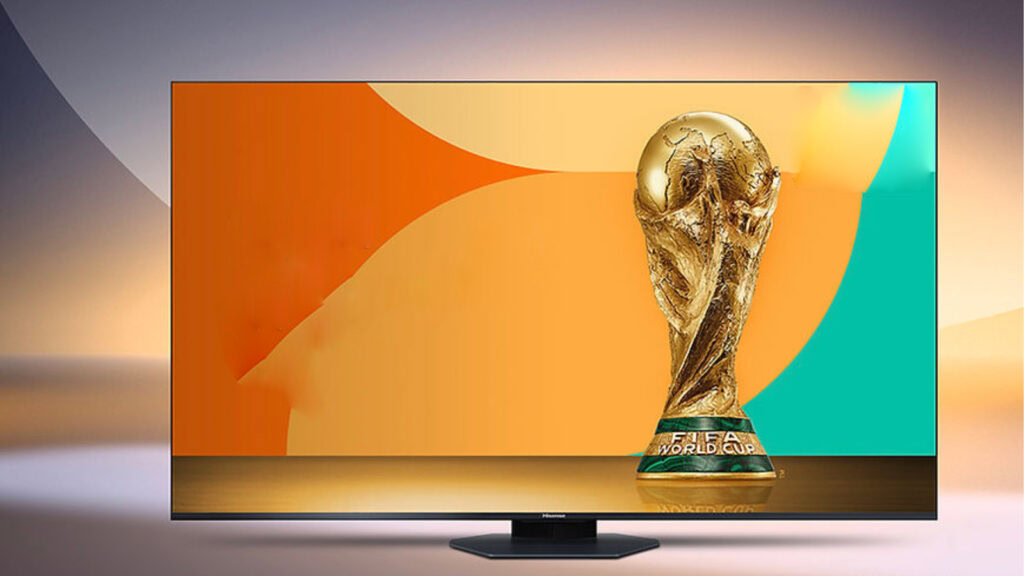
Credit: Hisense
The U8QG sits at the intersection of aspiration and accessibility. This model takes technologies that previously defined flagship televisions and packages them at prices that middle class buyers can actually afford. The mini LED Pro backlight delivers up to 5000 nits peak brightness depending on screen size, with the 65 inch model reaching around 4000 nits in testing. Full array local dimming with thousands of zones creates contrast that approaches OLED in darker scenes while maintaining the brightness advantage that LED technology provides.
Major Specifications
| Specification | Details |
|---|---|
| Processor / Chipset | Hi View AI Engine Pro based on MediaTek Pentonic 800 (MT9655), quad core Cortex A73 CPU, Mali G57 GPU |
| Operating System | Google TV with Chromecast built in, Google Assistant |
| Display | Available in 55″, 65″, 75″, 85″, 100″ – 4K resolution, Mini LED Pro backlight, mixture of VA and IPS ADS panels by size |
| Refresh Rate | 165Hz native with Game Booster 288Hz capability |
| HDR Support | Dolby Vision, Dolby Vision IQ, HDR10, HDR10+ Adaptive, HLG, IMAX Enhanced, Filmmaker Mode |
| Audio | 4.1.2 Channel system – 82W (100″/85″/75″), 72W (65″), 66W (55″), Dolby Atmos, DTS support, Hi Concert 2.0 |
| Ports | 3x HDMI 2.1 (all ports support 4K 165Hz), 1x USB C with DisplayPort support, USB 2.0, USB 3.0, Ethernet, Optical, AV composite |
| Connectivity | Wi Fi 6, Bluetooth 5.3, Chromecast, Google Cast, ATSC 3.0 tuner support |
| Smart Features | AI Picture, AI Sound, AI Scenario, AI 4K upscaling, AI Detail Enhancement, AI HDR Enhancement, Anti Reflection Pro, Pantone Validated |
| Gaming Features | VRR 48 165Hz, AMD FreeSync Premium Pro, ALLM, Game Mode Ultra, Game Bar interface, Dolby Vision Gaming |
User Type Recommendation: Who Should Buy It?
| User Type | Is This Smart TV a Good Fit? | Why? |
|---|---|---|
| Movie & Series Lovers | ✅ | Exceptional HDR highlights with up to 5000 nits peak brightness, comprehensive format support including Dolby Vision IQ |
| Gamers | ✅ | Native 165Hz with 288Hz boost, three HDMI 2.1 ports, FreeSync Premium Pro, USB C DisplayPort for PC gaming flexibility |
| Families & Home Users | ✅ | Google TV provides intuitive interface, strong selection of sizes from 55 to 100 inches, parental controls built into platform |
| Sports Fans | ✅ | High brightness maintains clarity in daytime viewing, fast refresh rate captures motion clearly, AI Sports Mode optimizes settings |
| Tech Enthusiasts | ✅ | Latest Pentonic 800 chipset, comprehensive AI features, Anti Reflection Pro coating, cutting edge mini LED implementation |
Quick Pros & Cons Table
| Pros | Cons |
|---|---|
| ✅ Outstanding brightness levels compete with TVs costing significantly more | ❌ Only three HDMI 2.1 ports may limit connectivity for some users |
| ✅ Comprehensive gaming features at mid range pricing | ❌ Mini LED blooming visible in challenging content |
| ✅ Google TV platform provides excellent app selection and interface | ❌ Viewing angles limited on VA panel models |
| ✅ Multiple size options accommodate different room configurations | ❌ Anti glare coating not as effective as some premium competitors |
3. Hisense Smart TVs: Hisense U7QG – The Gaming Sweet Spot
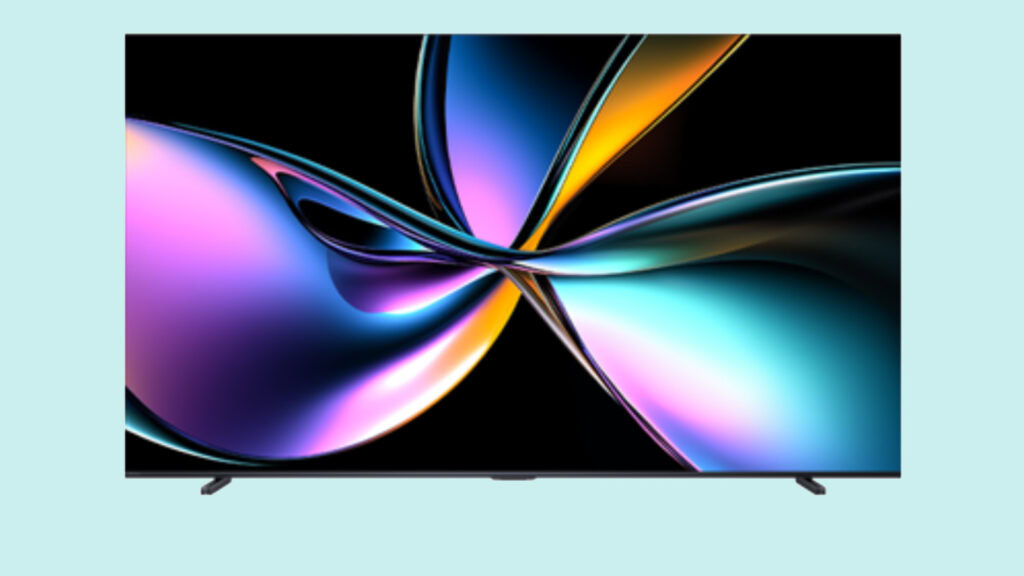
Credit: Hisense
The U7QG occupies the space where performance meets pragmatism. This smart TV was designed with gamers in mind first, then expanded to serve general viewing needs. The native 165Hz refresh rate puts it ahead of most televisions at any price point. Mini LED Pro backlighting delivers up to 3000 nits peak brightness, creating HDR impact without requiring flagship pricing. The inclusion of four HDMI 2.1 ports addresses a common complaint about recent Hisense models, providing flexibility for console gamers, PC users, and streaming device owners.
Major Specifications
| Specification | Details |
|---|---|
| Processor / Chipset | Hi View AI Engine Pro based on MediaTek Pentonic 800 (MT9655) |
| Operating System | Google TV (US) with Google Assistant and Chromecast |
| Display | Available in 55″, 65″, 75″, 85″, 100″ – 4K resolution, Mini LED Pro backlight, VA and IPS ADS panels |
| Refresh Rate | 165Hz native panel with Game Booster 288Hz |
| HDR Support | Dolby Vision, Dolby Vision IQ, HDR10, HDR10+, HLG, IMAX Enhanced, Filmmaker Mode |
| Audio | 2.1.2 Channel system with 60W output, Dolby Atmos, upfiring speakers for height channels |
| Ports | 4x HDMI 2.1 (all support 4K 165Hz), USB 2.0, USB 3.0, Ethernet, Optical audio, Headphone jack, AV composite |
| Connectivity | Wi Fi 6, Bluetooth 5.3, ATSC 3.0 tuner for NextGen TV broadcasts |
| Smart Features | Hi View AI Engine Pro with AI Picture, AI upscaling, AI Smooth Motion, AI Sports Mode, Anti Glare Low Reflection panel |
| Gaming Features | Native 165Hz, Game Mode Ultra, VRR support, ALLM, FreeSync Premium Pro, Dolby Vision Gaming, low input lag under 12ms |
User Type Recommendation: Who Should Buy It?
| User Type | Is This Smart TV a Good Fit? | Why? |
|---|---|---|
| Movie & Series Lovers | ✅ | Strong HDR performance with 3000 nits peak brightness, comprehensive format support creates cinematic experience |
| Gamers | ✅ | Native 165Hz refresh specifically targets gaming audience, four HDMI 2.1 ports accommodate multiple consoles and PC |
| Families & Home Users | ✅ | Google TV simplifies content discovery, wide size range from 55 to 100 inches, pricing remains accessible for families |
| Sports Fans | ✅ | Fast refresh rate captures quick motion clearly, brightness maintains visibility during day games, AI Sports Mode optimizes settings |
| Tech Enthusiasts | ✅ | Latest processing with Pentonic 800, gaming focused features typically found in more expensive models, ATSC 3.0 future proofs broadcast reception |
Quick Pros & Cons Table
| Pros | Cons |
|---|---|
| ✅ Four HDMI 2.1 ports provide flexibility for multiple devices | ❌ Audio system less robust than U8QG with only 60W output |
| ✅ Native 165Hz refresh rate excellent for gaming and sports | ❌ Typical brightness lower than U8QG at around 770 nits |
| ✅ Pricing typically starts under $1000 for 55 inch model | ❌ Mini LED zone count lower than higher tier models |
| ✅ ATSC 3.0 tuner enables NextGen TV 4K broadcasts | ❌ Anti glare solution functional but not as advanced as premium models |
4. Hisense Smart TVs: Hisense U7Q Pro – Balanced Performance and Value

Credit: Hisense
The U7Q Pro represents calculated compromise in the best sense. This model takes the processing power of the U8Q series and pairs it with slightly reduced specifications in areas that matter less to most viewers. The result delivers performance that exceeds budget models while maintaining pricing that avoids premium territory. Peak brightness reaches 2000 nits, creating impactful HDR without requiring the absolute peaks of flagship models. Mini LED Pro backlighting provides local dimming, though zone counts fall below the U8QG.
Major Specifications
| Specification | Details |
|---|---|
| Processor / Chipset | Hi View AI Engine Pro based on MediaTek Pentonic 800 (MT9655), same processor as U8QG |
| Operating System | VIDAA U9 (Europe) with voice assistant, Smart Home Ready compatibility |
| Display | Available in 55″, 65″, 75″, 85″, 100″ – 4K resolution, Mini LED Pro backlight, VA and IPS ADS panels by size |
| Refresh Rate | 165Hz native with Game Mode Ultra capability |
| HDR Support | Dolby Vision, Dolby Vision IQ, HDR10, HDR10+, HLG, IMAX Enhanced, Filmmaker Mode, Pantone Validated |
| Audio | 2.1.2 Channel system, 50 60W depending on model, two 15W or 10W main speakers, two 5W side firing, 20W subwoofer |
| Ports | 4x HDMI 2.1 supporting 4K 165Hz, USB 2.0, USB 3.0, Ethernet, Optical, Headphone jack, AV composite, CI+ slot |
| Connectivity | Wi Fi 6, Bluetooth 5.3, Apple AirPlay, Apple Home, Google Home, Alexa compatibility |
| Smart Features | AI Picture, AI upscaling, AI Detail Enhancement, AI HDR Enhancement, AI Smooth Motion, AI Sports Mode, Anti Reflection technology |
| Gaming Features | VRR with 288Hz Game Bar, AMD FreeSync Premium Pro, ALLM, Game Mode Ultra, low input lag |
User Type Recommendation: Who Should Buy It?
| User Type | Is This Smart TV a Good Fit? | Why? |
|---|---|---|
| Movie & Series Lovers | ✅ | 2000 nits peak brightness delivers strong HDR, Dolby Vision IQ adapts to ambient light conditions, Filmmaker Mode preserves creative intent |
| Gamers | ✅ | 165Hz refresh with VRR, four HDMI 2.1 ports, FreeSync Premium Pro, shares processing power with more expensive U8QG |
| Families & Home Users | ✅ | VIDAA U9 provides straightforward interface, solar powered remote reduces battery waste, multiple smart home integrations |
| Sports Fans | ✅ | 165Hz handles fast motion effectively, brightness sufficient for daytime viewing, AI Sports Mode enhances live broadcast quality |
| Tech Enthusiasts | ⚠️ | Solid specifications but less cutting edge than U8QG, uses same processor as higher model suggesting good value proposition |
Quick Pros & Cons Table
| Pros | Cons |
|---|---|
| ✅ Shares flagship processor with U8QG at lower price point | ❌ Peak brightness 2000 nits falls below U8QG capability |
| ✅ Four HDMI 2.1 ports accommodate multiple devices | ❌ Mini LED zone count lower than premium models |
| ✅ Wide smart home compatibility with multiple platforms | ❌ Anti Reflection technology less advanced than Pro version |
| ✅ Solar powered remote reduces environmental impact | ❌ VIDAA platform has smaller app selection than Google TV |
5. Hisense Smart TVs: Hisense A85Q OLED – The Organic Alternative

Credit: Hisense
The A85Q stands alone among the Hisense smart TVs as the sole OLED offering. This positioning reveals the company’s priorities clearly, with mini LED receiving the majority of development resources. Yet the A85Q serves an important purpose for viewers who prioritize perfect blacks and wide viewing angles over absolute brightness peaks. The OLED panel delivers infinite contrast through pixel level dimming, with each of the 8.3 million pixels able to turn completely off. Peak brightness reaches 1000 nits, sufficient for HDR impact in controlled lighting though unable to match mini LED in brighter environments.
Major Specifications
| Specification | Details |
|---|---|
| Processor / Chipset | Hi-View AI Engine based on MediaTek Pentonic 700 (MT9618), quad core Cortex A73 CPU, Mali G52 GPU |
| Operating System | VIDAA U8.5 with voice assistant, Smart Home Ready |
| Display | Available in 55″ and 65″ – 4K OLED panel, self emissive technology, 150000:1 contrast ratio |
| Refresh Rate | 120Hz native |
| HDR Support | Dolby Vision IQ, HDR10, HDR10+ Adaptive, 4K HDR Immersive, HLG |
| Audio | Multi channel with Dolby Atmos and DTS Virtual X support, output not specified |
| Ports | 2x HDMI 2.1 supporting 120Hz, USB ports, Ethernet, Optical audio, Headphone jack |
| Connectivity | Wi Fi, Bluetooth, Apple AirPlay 2, Alexa built in, Google Home compatibility |
| Smart Features | Color Correction Technology adjusting over 40000 colors, AI 4K Upscaler, Ultra Motion for 120Hz, AI Sports Mode, Brightness Enhancer |
| Gaming Features | 144Hz VRR with Game Mode Pro, 2x HDMI 2.1, ALLM, FreeSync Premium, input lag under 10ms |
User Type Recommendation: Who Should Buy It?
| User Type | Is This Smart TV a Good Fit? | Why? |
|---|---|---|
| Movie & Series Lovers | ✅ | Perfect blacks and infinite contrast create reference quality picture in dark room viewing, wide viewing angles maintain quality from any seat |
| Gamers | ✅ | Ultra low response time under 6ms, input lag under 10ms, 144Hz VRR, no risk of image persistence in varied content |
| Families & Home Users | ⚠️ | Excellent picture quality but limited size options, only 55 and 65 inches available, burn in concerns with static content |
| Sports Fans | ⚠️ | Fast response handles motion well but lower brightness struggles in bright rooms, 120Hz sufficient but not class leading |
| Tech Enthusiasts | ⚠️ | OLED technology mature rather than cutting edge, processing less advanced than mini LED models, limited innovation compared to RGB mini LED |
Quick Pros & Cons Table
| Pros | Cons |
|---|---|
| ✅ Perfect blacks and infinite contrast through OLED technology | ❌ Only 1000 nits peak brightness limits HDR impact |
| ✅ Wide viewing angles maintain picture quality from off center | ❌ Limited to only 55 and 65 inch sizes |
| ✅ Ultra fast response time ideal for gaming and motion | ❌ Burn in risk with static content requires careful usage |
| ✅ Color Correction Technology refines over 40000 colors | ❌ Less advanced processor than mini LED siblings |
6. Hisense Smart TVs: Hisense E7Q Pro – Quantum Dot on a Budget

Credit: Hisense
The E7Q Pro targets buyers seeking quantum dot color without mini LED pricing. This model employs direct LED backlighting rather than the mini LED arrays found in more expensive models. The result creates a capable smart TV that delivers solid performance without breakthrough specifications. Quantum Dot Color technology provides 90 percent DCI P3 color space coverage, creating vivid images that exceed standard LED capabilities. The 144Hz refresh rate enables smooth gaming and sports viewing, though brightness peaks around 400 to 600 nits typical output.
Major Specifications
| Specification | Details |
|---|---|
| Processor / Chipset | Hi View AI Engine based on MediaTek Pentonic 700 (MT9618) |
| Operating System | VIDAA U8.5 with voice assistant, built in Alexa, Apple AirPlay 2 |
| Display | Available in 55″, 65″, 75″, 85″, 100″ – 4K resolution, Direct LED backlight, VA and IPS ADS panels, Quantum Dot Color |
| Refresh Rate | 144Hz native with Game Mode Pro |
| HDR Support | Dolby Vision, HDR10, HDR10+ Adaptive, 4K HDR Immersive, HLG, Filmmaker Mode |
| Audio | 2x 10W speakers, Dolby Atmos, DTS X decoding support |
| Ports | HDMI 2.1 ports with 144Hz support, USB ports, Ethernet, Optical audio, Headphone jack, AV composite |
| Connectivity | Wi Fi, Bluetooth, Apple AirPlay 2, Alexa built in, Google Home compatibility |
| Smart Features | AI Picture, AI 4K Upscaler, AI Smooth Motion, AI Sports Mode, MEMC technology |
| Gaming Features | 144Hz VRR with Game Mode Pro, ALLM, FreeSync Premium, Game Bar interface for quick settings adjustments |
User Type Recommendation: Who Should Buy It?
| User Type | Is This Smart TV a Good Fit? | Why? |
|---|---|---|
| Movie & Series Lovers | ⚠️ | Quantum Dot provides good color but limited brightness reduces HDR impact, best suited for darker viewing environments |
| Gamers | ✅ | 144Hz refresh rate smooth for gaming, low latency mode reduces input lag, FreeSync Premium prevents tearing, affordable entry for gaming focused TV |
| Families & Home Users | ✅ | Wide range of sizes accommodates different spaces, VIDAA platform straightforward for all ages, pricing accessible for budget conscious families |
| Sports Fans | ⚠️ | 144Hz handles motion adequately but lower brightness struggles with daytime viewing, AI Sports Mode helps optimize picture for broadcasts |
| Tech Enthusiasts | ❌ | Direct LED rather than mini LED limits performance, specifications appropriate for budget tier but nothing cutting edge |
Quick Pros & Cons Table
| Pros | Cons |
|---|---|
| ✅ Quantum Dot Color provides vibrant images at budget pricing | ❌ Direct LED backlighting cannot match mini LED contrast control |
| ✅ 144Hz refresh rate strong for price point | ❌ Typical brightness around 400 600 nits limits HDR impact |
| ✅ Available in sizes up to 100 inches including affordably priced large options | ❌ Limited local dimming compared to mini LED models |
| ✅ Comprehensive smart home integration with multiple platforms | ❌ VIDAA platform has smaller app selection than Google TV |
Comparing the Six Hisense Smart TVs
Comparison Table for 6 Hisense Smart TVs
| Hisense Smart TVs | Processor / Chipset | Display Type & Size |
|---|---|---|
| Hisense UX/UXQ | Hi-View AI Engine X (MediaTek Pentonic) | RGB Mini LED, 100″ / 116″, VA panel |
| Hisense U8QG | Hi-View AI Engine Pro (Pentonic 800) | Mini LED Pro, 55″ 100″, VA/IPS ADS |
| Hisense U7QG | Hi-View AI Engine Pro (Pentonic 800) | Mini LED Pro, 55″ 100″, VA/IPS ADS |
| Hisense U7Q Pro | Hi-View AI Engine Pro (Pentonic 800) | Mini LED Pro, 55″ 100″, VA/IPS ADS |
| Hisense A85Q OLED | Hi-View AI Engine (Pentonic 700) | OLED Self Emissive, 55″ / 65″ |
| Hisense E7Q Pro | Hi-View AI Engine (Pentonic 700) | Direct LED QLED, 55″ 100″, VA/IPS ADS |
Hisense Smart TVs: Choosing Your Perfect One

Credit: iken3
The six Hisense Smart TVs examined here represent more than product differentiation. They embody different philosophies about what matters most in the viewing experience. The UX series chases absolute performance without concern for mass market pricing. The U8QG delivers flagship features to mainstream buyers. The U7QG prioritizes gaming while maintaining broad appeal. The U7Q Pro balances specifications against budget. The A85Q offers OLED to viewers who prefer that technology. The E7Q Pro provides quantum dot color at entry-level pricing.
The choice depends on your priorities. Gamers gravitating toward high refresh rates and low input lag find strong options across the lineup. Movie enthusiasts seeking HDR impact discover that brightness matters more than marketing might suggest. Families looking for reliable performance without premium pricing recognize the value proposition that defines Hisense’s positioning in the market.
These Hisense Smart TVs offer pathways into modern television that balance aspiration with reality. They bring technologies once reserved for luxury pricing into reach of buyers who simply want quality without excess. The screens deliver their images night after night, creating experiences that fade into the background or command attention depending on what appears within their frames.

